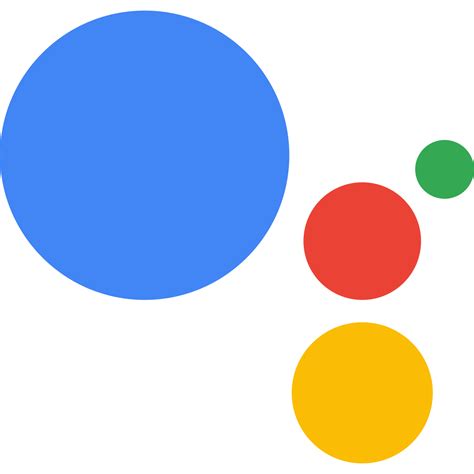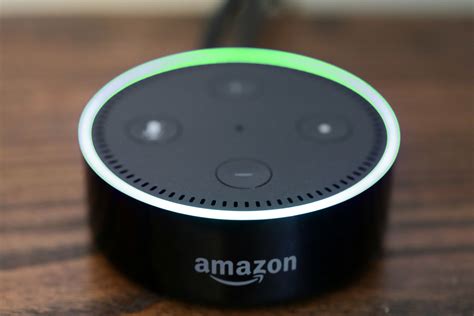Top 10 Voice Recognition Applications
Voice recognition technology has come a long way since its inception in the mid-20th century. We’re now seeing it being used everywhere, from personal assistants like Siri and Alexa to the virtual assistants used in healthcare and education. Voice recognition applications can be found on almost every device, from smartphones to smart TVs. In this article, we’re going to outline some of the best voice recognition applications available on the market.
1. Google Assistant
Google Assistant is a virtual personal assistant developed by Google. It is one of the most advanced voice recognition applications. With the Google Assistant, you can control your smart home devices, get information about the weather, set reminders, and do so many other things. The beauty of this app is that it’s available on most Android devices and can be activated by voice commands.
2. Siri
Siri is one of the most popular voice recognition applications, used by many iOS users. It is developed by Apple and works with all iOS and macOS devices. Siri can help you with anything from setting reminders, finding directions, and even sending messages. With the new shortcuts feature, you can even program your own custom commands to perform more advanced tasks.
3. Amazon Alexa
Amazon Alexa is a virtual assistant developed by Amazon. It is known for its high-quality audio output and compatibility with many smart home devices. Alexa can perform a wide variety of tasks, from playing music to controlling smart home devices like lights and thermostats. Additionally, Alexa can recognize multiple voices, making it a great choice for households with multiple users.
4. Dragon NaturallySpeaking
Dragon NaturallySpeaking is a highly rated voice recognition application on the market. It is used primarily for dictation, but can also be used for other tasks. Dragon NaturallySpeaking is known for its accuracy and speed. The app is used mainly by professionals, students, and authors who need to transcribe long documents quickly and with minimal errors.
5. Nuance OmniPage
Nuance OmniPage is a highly rated OCR software that supports voice input. It can read text from any scanned document and convert it into a text document. The voice commands are used to control the software while reading the text content of the document. The text can be edited and saved in several file formats including Microsoft Word, Adobe Acrobat, and Corel WordPerfect.
6. Bixby
Bixby is a virtual assistant developed by Samsung. It has a fully functional voice recognition system that can perform most of the tasks available on any device. Bixby can also control smart home devices and provides text translation for several languages. The voice recognition component is activated using the “Hi, Bixby” command.
7. Cortana
Cortana is a virtual assistant developed by Microsoft. It was first introduced as a Windows phone feature, but is now available on Windows 10 and other operating systems. The voice recognition is highly advanced and can perform many tasks, including setting reminders, sending messages, and making phone calls.
8. IBM Watson
IBM Watson is a supercomputer that uses machine learning and artificial intelligence to understand natural language. The voice recognition component of Watson is used to understand spoken language and provide contextually relevant outputs. Watson is used mainly in businesses and industries for large-scale data analysis and decision making.
9. SoundHound
SoundHound is a voice recognition application that helps you identify songs by their melodies or lyrics. It is also used for playing music, which can be initiated through voice commands. SoundHound can even recognize singing and humming, making it a great tool for musicians and music lovers alike. The app is available for both Android and iOS devices.
10. Prisma
Prisma is a voice recognition application used primarily for photo editing. Once you’ve taken a photo, you can edit it using voice commands. Prisma can apply filters, adjust brightness, contrast, and other editing techniques through voice commands, making it a great time saver for those who love to edit their photos manually. The app is available for both Android and iOS devices.
Conclusion
Voice recognition technology has come a long way and is now an integral part of many aspects of our lives. As you can see, there are many voice recognition applications available on the market, each with its unique features and functions. Whether you’re using it to control smart home devices, transcribe documents, or edit photos, these voice recognition applications can help you work more efficiently and effectively.
Frequently Asked Question
1. How does voice recognition technology work?
Voice recognition technology uses a combination of algorithms and machine learning to analyze vocal patterns and match them to pre-existing samples in order to identify the words being spoken.
2. What are the applications of voice recognition technology?
Voice recognition technology is used across a wide range of industries, including healthcare, banking, automotive, and consumer electronics. Some common applications include virtual assistants, transcription software, and home automation systems.
3. What are the benefits of voice recognition technology?
Voice recognition technology can provide a number of benefits, including increased efficiency, improved accuracy, and enhanced accessibility for individuals with disabilities or limited mobility.
4. What are the limitations of voice recognition technology?
Some limitations of voice recognition technology include inaccuracies in speech recognition, difficulties recognizing accents or dialects, and limitations in vocabulary and context understanding.
5. How secure is voice recognition technology?
Voice recognition technology can be secure if implemented properly, but there are still some concerns around the potential for unauthorized access to voice data and the ability for attackers to spoof or manipulate voice samples.
6. Can voice recognition technology be used for authentication and verification?
Yes, voice recognition technology can be used for authentication and verification by analyzing speech patterns and comparing them to pre-existing voice samples.
7. What types of devices support voice recognition technology?
Voice recognition technology is supported on a wide range of devices, including smartphones, smart TVs, home automation systems, and smart speakers.
8. What is natural language processing (NLP) and how does it relate to voice recognition technology?
Natural language processing is a subfield of artificial intelligence that focuses on understanding and processing human language. Voice recognition technology relies heavily on NLP and machine learning algorithms to accurately recognize and interpret spoken language.
9. How does voice recognition technology impact speech-to-text transcription?
Voice recognition technology has greatly improved the accuracy and efficiency of speech-to-text transcription, making it a valuable tool for professionals in a wide range of industries.
10. What is the future of voice recognition technology?
The future of voice recognition technology is likely to see continued advancements in accuracy, efficiency, and accessibility, along with increased integration into a wide range of products and services.


